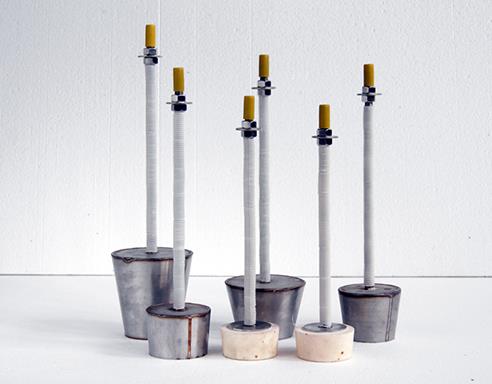What is the function of ladle blowing argon stirring?
What is the function of ladle blowing argon stirring?
The functions of ladle blowing argon stirring are: (1) Uniform molten steel temperature The molten steel flowing from the steelmaking furnace to the ladle, the temperature distribution in the ladle is uneven. Due to the heat absorption of the ladle lining and the heat dissipation of the ladle surface, the temperature of the molten steel around the ladle lining is not uniform. If the temperature is lower, the temperature in the central area is higher, the temperature of the molten steel on the upper and lower parts of the ladle is lower, and the temperature in the middle is higher.
The ladle blowing argon stirring makes the molten steel temperature uniform, and can make the heat transfer from the molten steel to the ladle lining into a stable state, so that the molten steel temperature is stable and uniform during the continuous casting process. (2) Add a large amount of ferroalloy to the ladle when tapping the uniform molten steel composition, the composition is not uniform, and the composition of molten steel can be uniform by blowing argon and stirring.
Argon blowing and stirring can be started during the tapping process. During the argon blowing and stirring process, the composition of the molten steel can be quickly analyzed and fine-tuned to make the composition control range of the steel narrower and ensure the uniformity of the steel performance. (3) Promote inclusions The floating and stirring molten steel promotes the collision and growth of non-metallic inclusions in the steel, the floating bubbles can absorb the gas in the steel, and at the same time adhere to the inclusions suspended in the molten steel and bring them to the surface of the molten steel to be absorbed by the slag layer.
Production practice shows that the oxygen content of molten steel after stirring with argon is significantly reduced, and the reduction range is related to the degree of deoxidation, which can generally be reduced by more than 20 percent; however, the denitrification effect is not obvious, and attention should be paid to reducing nitrogen increase.

Previous: Extensive use of ladle breathable bricks
下一条: What should I do if there are cracks in the ramming material of the intermediate frequency furnace?
Related Industry Knowledge
- Features and Benefits of Coil Clay
- What are the advantages of a good furnace lining
- Misunderstandings in the use of ramming materials in intermediate frequency furnaces
- Phenomenon analysis of failure of argon blowing of ladle permeable bricks and how to improve the rate of argon blowing
- Where is the consumption reduction and energy saving of breathable bricks reflected?
- How to improve the service life of intermediate frequency furnace lining
- Reasons for damage to intermediate frequency furnace lining and how to solve them
- The performance and advantages of breathable brick
- Analysis of Structural Characteristics of Dispersive Breathable Bricks
- The intermediate frequency furnace charge knotting process needs to pay attention to details sharing
- Extensive use of ladle breathable bricks
- How to reduce nitrogen content in steel during intermediate frequency induction furnace smelting
- Main components of refractory materials such as breathable bricks, nozzle block bricks, castables, etc.
- Iron hook ramming material and castable for blast furnace
- What is the difference between stainless steel pipes produced by refining furnaces and intermediate frequency furnaces?
- The performance characteristics of ramming material and its construction introduction
- What role does the coil glue play between the coil turns?
- What are the main performances of breathable bricks
- A brief introduction to the main manifestations of energy saving and consumption reduction of breathable bricks
- What are the performance and advantages of breathable bricks


